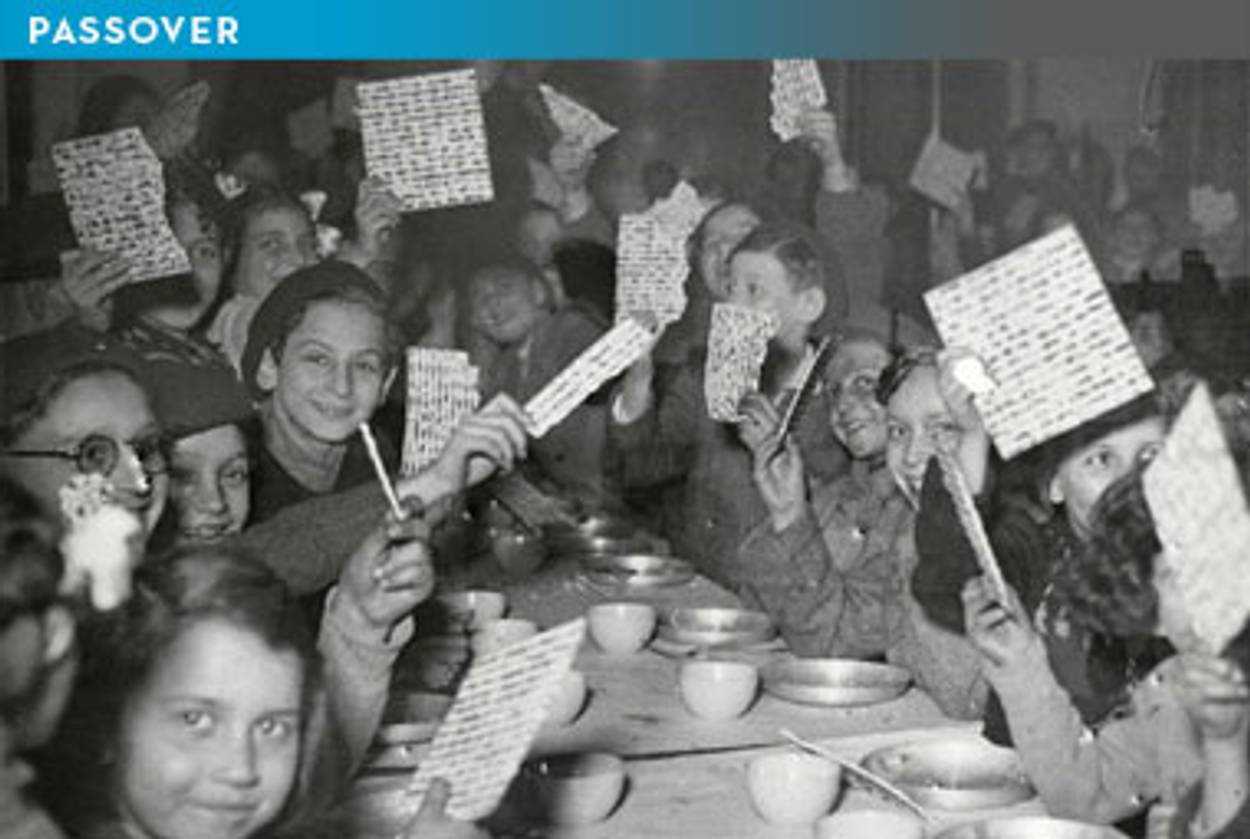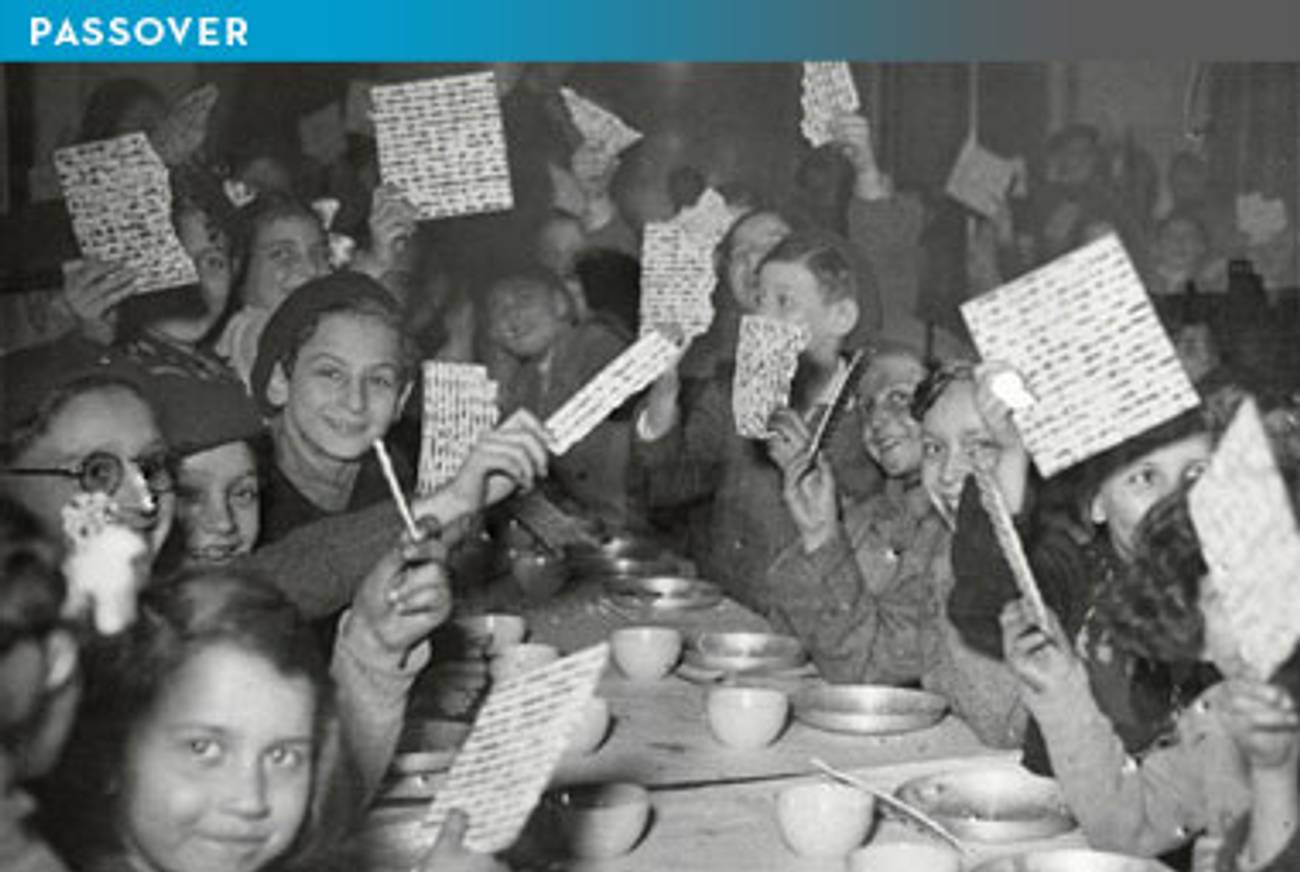On the Bookshelf
Beyond Maxwell House: A haggadah roundup




Passover haggadot are the sort of potential cash cows publishers dream about: Short pamphlets that can be cheaply reproduced and that market themselves on a predictable annual schedule, they tend to be snapped up in batches of eight or 12 at a time, with additional purchases necessary as families expand or after a bored toddler has mercilessly ripped a copy to shreds. The only problem: the brilliant marketing executive Joseph Jacobs, who intuited that a free haggadah giveaway could efficiently introduce the name of a brand into just about every Jewish home in America—and, as it has turned out, into one very important non-Jewish house, too—and, to this end, created the ubiquitous Maxwell House Haggadah. To grab a slice of what’s left of this market, publishers must offer something Maxwell House does not: that is, more than just the bare bones Hebrew text of a traditional seder along with occasionally wonky English translations.
* * *
Some haggadot supplement the traditional narrative of slavery and freedom with references to resonant recent events. The Koren Journey to Freedom Haggada: An Ethiopian Haggada (Koren, March), for one example, focuses on a modern exodus from North Africa, in which some 20,000 Jews left their homes in Ethiopia, southeast of Egypt, and journeyed to Israel during operations in the mid-1980s and in 1991. The haggadah, edited by Rabbi Menachem Waldman, introduces Amharic versions of the Exodus story in Hebrew translations, along with photographs and descriptions of Ethiopian Jewish rituals alongside the traditional texts.
In Every Generation (Devora Publishing, March) takes a similar approach. Drawing upon the archives of the American Jewish Joint Distribution Committee, the slim book includes pictures and anecdotes from humanitarian missions run by the Joint in postwar Europe, Yemen, Ethiopia, Morocco, Lithuania, Iran, and elsewhere. If that’s not enough food for your thought, the book also includes a foreword by Rabbi Joseph Telushkin lauding the Joint, and running commentary by former New York Times religion reporter Ari L. Goldman.
* * *
Another strategy is to distinguish a haggadah with an inventive format or design, as the creators of The Generations Haggadah (Matan Arts, March) have done. Folded accordion-style like a roadmap and printed in full color, this haggadah runs an unbroken timeline of a few millennia of Jewish history along the bottom of its pages, underneath the traditional holiday texts and a handful of apposite illustrations. In this booklet, Jewish history ends smack in 1948, with the establishment of the State of Israel—meaning that this haggadah would pair nicely with one of those mentioned above, which update the story a little.
* * *
Rabbi Norman Lamm, chancellor of Yeshiva University, is perhaps the leading contemporary exponent of the Modern Orthodox movement headquartered at that university, a deeply learned scholar and former congregational rabbi unafraid of ruffling a few feathers among the less steadfastly traditional: He has told the Jerusalem Post that “with a heavy heart we will soon say kaddish on the Reform and Conservative Movements” and that he objects to the ordination of female rabbis on a “social, not religious” basis. Admirers of Lamm’s piety and perspicacity can now bring his wisdom to their festive dinner with The Royal Table: A Passover Haggadah (Orthodox Union, March), which collects the rabbi’s commentary on the holiday traditions.
Season of Renewal: A Family Haggadah (Behrman House, January) also embodies the spirit of a respected community leader: in this case, Rabbi Dr. John Levi, the first Australian-born Jew to be rabbinically ordained and the author of several historical volumes about Jewish settlement on that continent. For better or worse, the haggadah, illustrated by Australian graphic designer and puppeteer Naomi Tippett, isn’t particularly Aussie-themed—no kangaroos hiding the afikomen in their pouches, no didgeridoo tunes for Adir Hu—but interested parties are invited to download audio files in which the children of Melbourne’s King David School sing seder classics to bouncy synthesizer tunes.
* * *
Kevin Geofferey grew up attending traditional seders—“the fancy china, the matzah ball soup, the brisket, the gefilte fish”—but his problem with the nauseating Messianic Passover Haggadah isn’t that it features Jesus Christ too prominently. On the contrary, Geoffrey, a fervent believer in Yeshua—that is, Jesus Christ—and the leader of Perfect Word Ministries of Phoenix, Arizona (“A Messianic Jewish Equipping Ministry”), intends his new Behold the Lamb: A Scripture-Based, Modern, Messianic Passover Memorial ‘Avodah (Perfect Word Publishing, January) to lead his Messianic coreligionists in a Passover commemoration that stays faithful to the textual sources: the texts in this case being mostly Luke, Matthew, Mark, and John. Don’t expect Geofferey’s pseudo-seders to be much fun, though: By Geofferey’s own admission his book does not attempt “to make the service more lively, more entertaining, more meaningful, more Jewish, more Messianic, or anything else.” In those respects, at least, it is a remarkable success.
* * *
Passover-themed books for children treat the holiday in surprisingly complex ways. Sure, some of them, like Harriet Ziefert’s Passover: Celebrating Now, Remembering Then (Blue Apple, February, 4-8) simply provide overviews of history and ritual with charming illustrations. But Leslie Kimmelman’s The Little Red Hen and the Passover Matzah emphasizes, with the indefatigable spirit of a Yiddish-speaking grandmother, what an enormous effort it takes to put together a proper holiday celebration (Holiday House, March, 4-8)—a message sure to appeal, at least, to many harried hosts and hostesses. Mindy Avra Portnoy’s Tale of Two Seders (Kar-Ben/Lerner, January, 4-8), meanwhile, despite its title is neither an homage to Dickens nor an examination of yom tov sheni shel galuyot, but rather an upbeat exploration of the challenges faced by children of divorce when the holidays arrive. As the book concludes, in a message that all of us might bear in mind as we sit down with our friends and relatives next week: “Families are like charoset. … Some have more ingredients than others, some stick together better than others, some are sweeter than others. But each one is tasty in its own way.”
Josh Lambert (@joshnlambert), a Tablet Magazine contributing editor and comedy columnist, is the academic director of the Yiddish Book Center, Visiting Assistant Professor of English at the University of Massachusetts, Amherst, and author most recently of Unclean Lips: Obscenity, Jews, and American Culture.
Josh Lambert (@joshnlambert), a Tablet Magazine contributing editor and comedy columnist, is the academic director of the Yiddish Book Center, Visiting Assistant Professor of English at the University of Massachusetts, Amherst, and author most recently ofUnclean Lips: Obscenity, Jews, and American Culture.